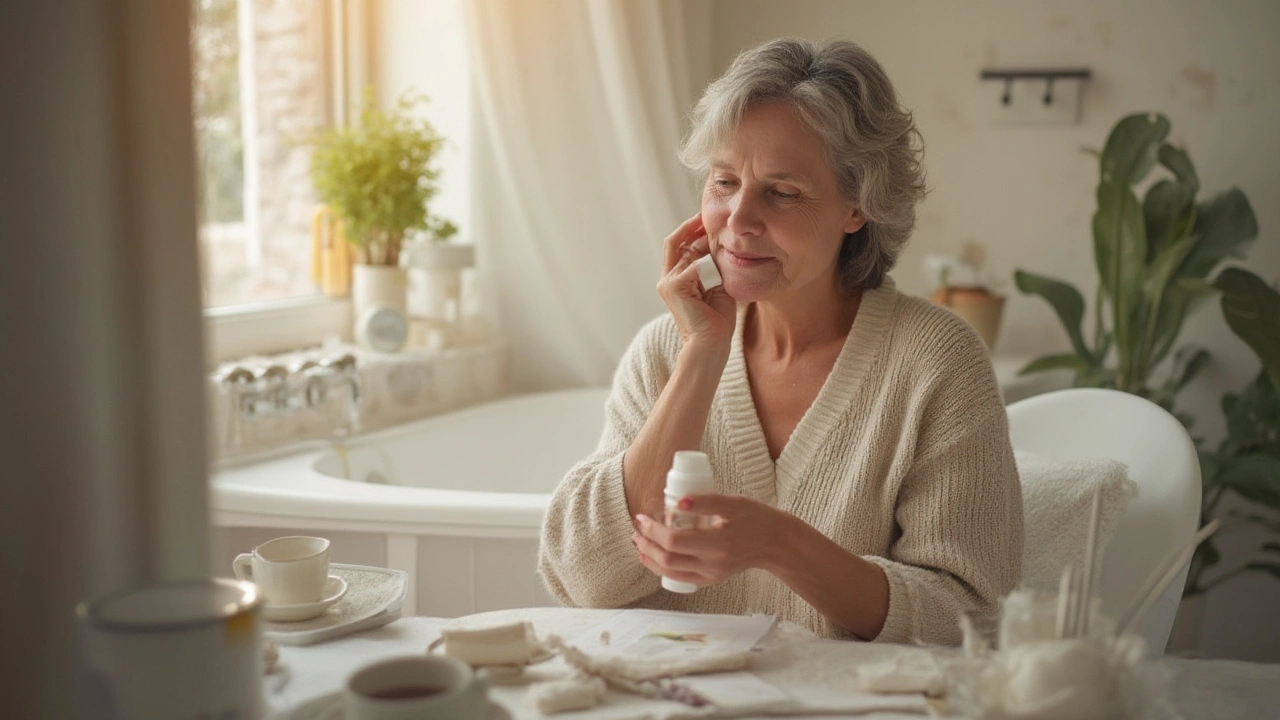Estrogen Dryness: What It Is and How to Find Relief
If you’ve ever felt uncomfortable, itchy, or tight in places that normally stay moist, you might be dealing with estrogen dryness. It’s not a rare thing – many women notice it during menopause, after pregnancy, or when certain meds lower hormone levels. The good news is you can spot the signs early and take steps that actually help.
Why Estrogen Levels Drop
Estrogen is the hormone that keeps the lining of the vagina and the skin inside that area supple and well‑lubricated. When estrogen falls, the tissue thins, blood flow slows, and natural moisture disappears. The most common culprits are:
- Natural aging – menopause usually brings a sharp dip in estrogen.
- Pregnancy and breastfeeding – hormone shifts can linger weeks or months after delivery.
- Birth control pills or hormonal IUDs – some formulations lower estrogen as a side effect.
- Medications like certain antidepressants or chemotherapy drugs that interfere with hormone production.
- Health conditions such as thyroid disorders or autoimmune diseases that affect hormone balance.
Knowing what’s pulling your estrogen down helps you choose the right fix, whether it’s a lifestyle tweak or a prescription.
Practical Ways to Fight the Dryness
First, talk to a doctor. A simple blood test can confirm low estrogen and point out any underlying health issues. From there, you have several options that fit different budgets and comfort levels.
Topical moisturizers: Over‑the‑counter gels and creams are an easy first step. Look for products labeled “vaginal moisturizer” with ingredients like hyaluronic acid or glycerin. Apply a little a few times a week, and you’ll notice smoother skin without the need for a prescription.
Water‑based lubricants: These are perfect for sexual activity. Stick with silicone‑free formulas if you use latex condoms. A small amount goes a long way, and it won’t disrupt the natural pH balance.
Hormone therapy: Low‑dose estrogen creams, tablets, or patches can restore moisture fast. Your doctor will tailor the dose to your needs, and many women feel relief within days. Remember, therapy isn’t for everyone, so discuss risks and benefits.
Natural allies: Foods rich in phytoestrogens – soy, flaxseed, lentils, and chickpeas – can give your body a gentle boost. Add a handful of nuts or seeds to your daily meals, and you’ll support hormone health without pills.
Lifestyle tweaks: Staying hydrated, avoiding harsh soaps, and wearing breathable cotton underwear keep the area from drying out further. Gentle yoga or pelvic floor exercises improve blood flow, which also helps tissue stay moist.
If you’re unsure which route to take, start with the simplest changes – a good moisturizer, more water, and a few phyto‑rich meals. If symptoms persist, schedule a check‑up and explore hormonal options. You don’t have to live with the discomfort; there are practical steps you can try right now.
Learn how to spot and deal with estrogen-related dryness and itching. Clear signs, causes, treatment options, and real tips for everyday life.
